Your Expert Guide: What to see in Cádiz Province
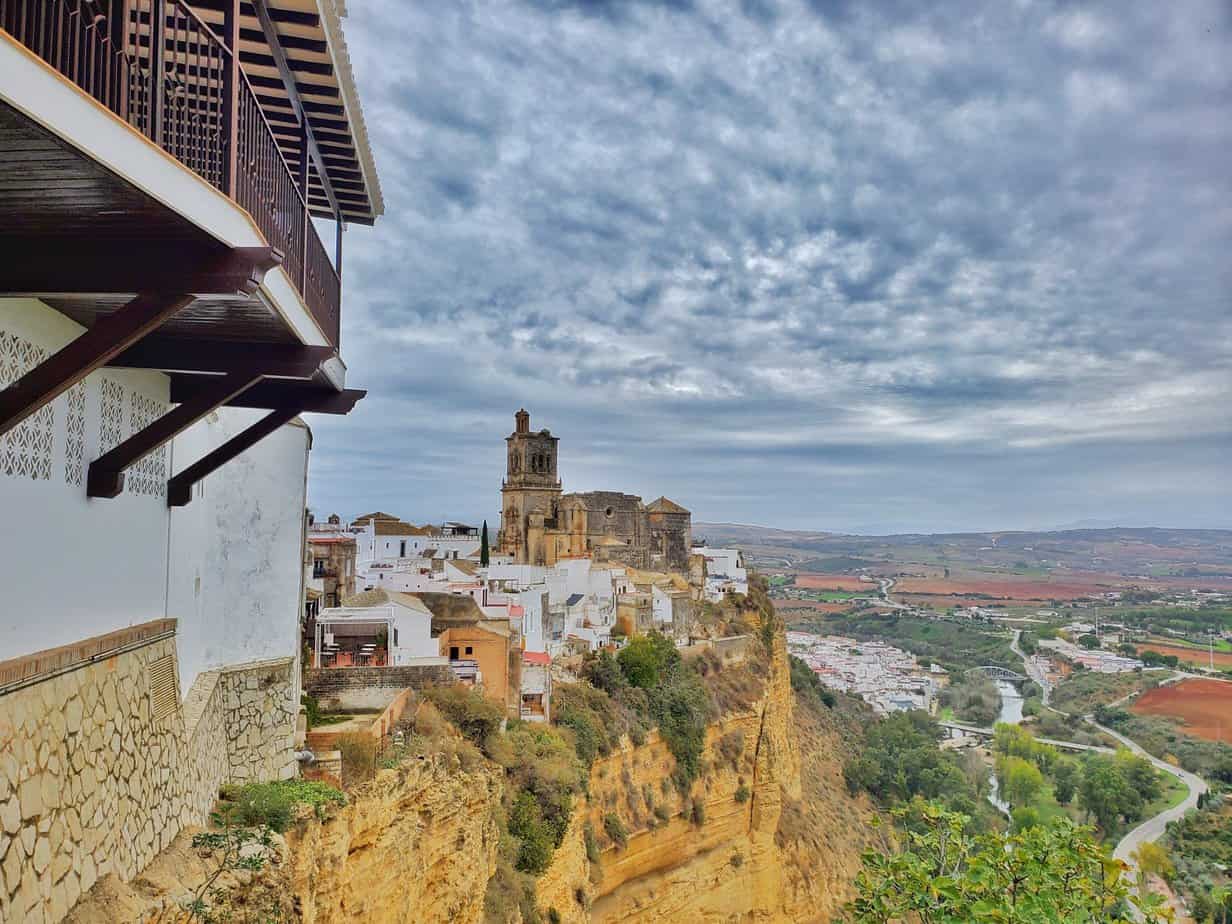
You may know the name Cádiz as belonging to the ancient city-port of Cádiz but did you know that it’s also the name of the southernmost province in the autonomous region of Andalusia? In this article we’re going to consider what to see in Cádiz Province, the very best places to go and the best things to do.
Why should you explore Cádiz Province
When people think of Spain, it’s images of Andalucía that come to mind. And when they think of Andalucía, it’s often the province of Cádiz they’re imagining.
Cádiz has a little bit of everything. You’ll find
🏖 Sparkling beaches along the incredible Costa de la Luz
🏰 Gorgeous pueblos blancos (the white towns) and castles
💃🏻 Flamenco dancers
🌳 National parks, olive trees, cork trees and more
🍷 Sherry
If you’re coming to Andalucía and really want to get to know the region, you can’t miss out on Cádiz province. If you’re considering a side-trip to Cádiz from Madrid (or a trip to Madrid from Cádiz), I highly recommend that too.
🛝 Cádiz is also a great place to visit with kids – there’s plenty to do here for the whole family.
There may be affiliate links in the article. If you click and make a purchase then I may, at no extra cost to you, make a small sum. Thank you!
How to explore Cádiz
✈️ The nearest airports to Cádiz are outside Seville, Malaga, Gibraltar and Faro (Portugal)
🚌 There is a good public transport system in Andalucía generally and the buses move between the smaller towns on schedule.
🚂 There are train stations in Cádiz and Jerez de la Frontera.
🚗 The easiest way to get around is always with a rental car. This gives you the freedom to go where you like, when you like.
👣 There are great tour options for day trips and longer trips around the province, too. I tend to use GetYourGuide when figuring out my tour options.
What to do in Cádiz Province
Cádiz – the city
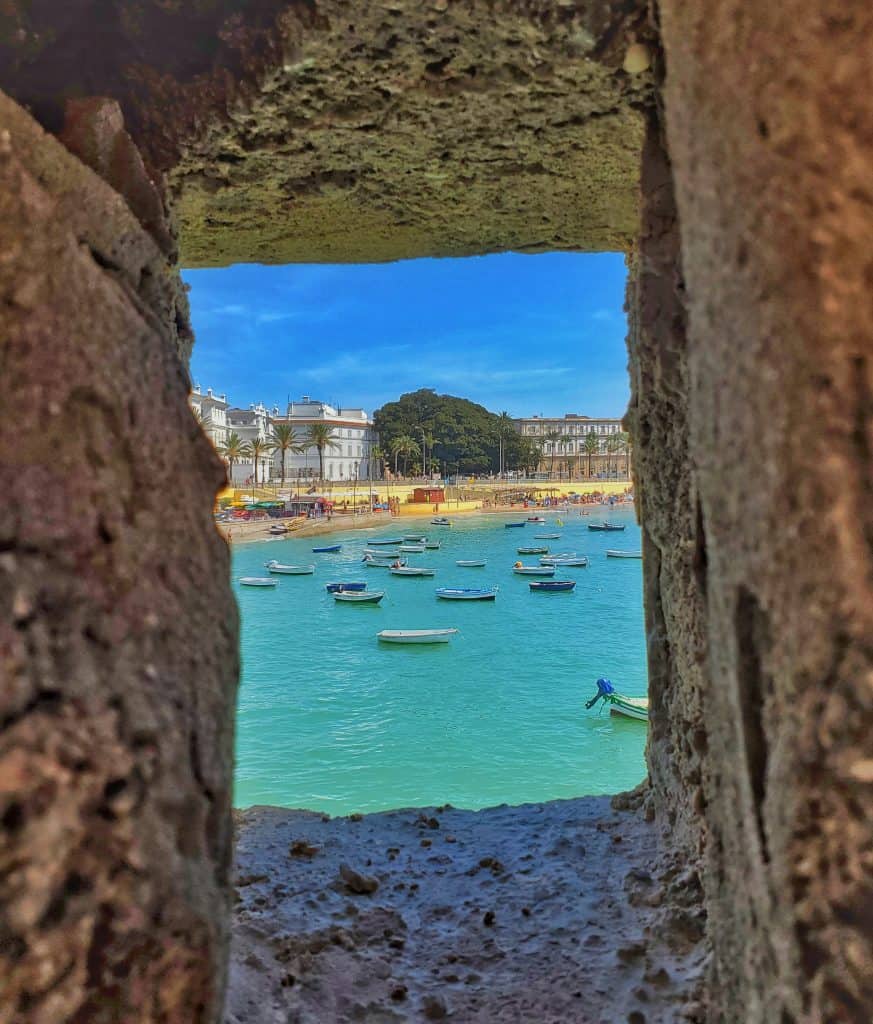
Cádiz city claims to be the oldest continuously inhabited city in Europe having been founded by the Phoenicians in around 1100 BCE. The city is almost entirely surrounded by water, in fact, driving over the bridge into Cádiz is part of the fun. The city is on a spit of land that juts out into the Bay of Cádiz.
What to do in Cádiz
There is so much to do in Cádiz that you absolutely can’t see it all in a day (I know because we tried) unlike the gorgeous small city of Segovia that is doable in a day.
➡️ Enjoy wandering aimlessly and getting yourself lost in the small and winding streets of Cádiz’s old town.
➡️ Teatro Romano (Roman Theatre) – this first-century BCE theatre is partially visible from the street and the entrance is just off the cathedral square. If you wish to visit the museum with it I believe you need to book online but the partially excavated theatre can be visited without reservation.
If you love Roman cities, then don’t forget to add the Roman city of Mérida to your list of Spanish must-see destinations.
➡️ Walk the Campo del Sur (the malecón) – this walkway follows the curve of the coast. It isn’t a beach walk, rather you look down over the water from this curved and gorgeous pathway. Apparently it was this part of Cádiz that inspired the layout of Havana.
It’s also reminiscent of the Paseo de España in Malaga. If you’re going to be in Malaga, by the way, you can’t miss the astoundingly gorgeous mountain pueblo blanco of Mijas.
➡️ Playa de la Caleta – this is a small beach in the old fisherman’s quarter of La Viña. The beach is flanked by forts on either side. It is a popular beach that is well worth a look even if you don’t have any plans to sunbathe. In English you’ll see it referred to as La Caleta Beach. La Viña is a fun area to explore and here you’ll find some of Cádiz’s best tapas bars.
➡️ Castillo de San Sebastian – once you’ve checked out the beach, be sure to walk the 400-metre bridge to the island-castle out at sea. While you can’t actually enter the castle, the walk itself is a lot of fun.
➡️ Castillo de Santa Catalina – one of the two forts flanking the city beach, this fort was built in the 1600s. Today it’s free to enter and look around. When we visited it had a good photography exhibition too
➡️ Parque Genovés – walk either through this small park (there’s a small playground at one end) or walk alongside it like we did to take in more gorgeous coastal views and to let the kids ignore the park but go wild in the skate park
➡️ Torre Tavira – this is Cádiz’s camera obscura. It’s just a ten-minute climb to the top (despite being the city’s highest point). From the top, there is a gorgeous panoramic view of Cádiz. Note that you must reserve your admission time online.
➡️ Baluarte de la Candelaria – we couldn’t go inside this 17th-century fort but we fell in love with the gardens (Jardines Clara Campoamor) just outside it. This was our first introduction to the astounding giant rubber trees of Cádiz. If you didn’t know about them, now you do! Cádiz is famous for its enormous rubber trees. There are some here and some just outside the university in front of the beach (playa de la Caleta).
➡️ Yaciemento Arqueologico Gadír – this free archaeological museum is home to the ruins of a Phonecian settlement. The visit begins with a short video and then you’re given time to walk around the 3000-year-old ruins of the city of Gadír and exclaim (because you will) over everything including the animal and even human remains (from a young man who was killed by fire in the seventh century BCE)
➡️ Museo de Cádiz – this museum is full of local artefacts and art.
⭐️ There are a myriad of excellent reasons to visit Spain, and Cádiz is just one of them.

⭐️ Cádiz is definitely one of the best places to visit in Andalucía with kids
⭐️ Read more about exploring Cádiz city
🏨 Cádiz hotel top pick: ByPillow La Sal
👣 Best tour of Cádiz: 3 hr tapas tour
Jerez de la Frontera
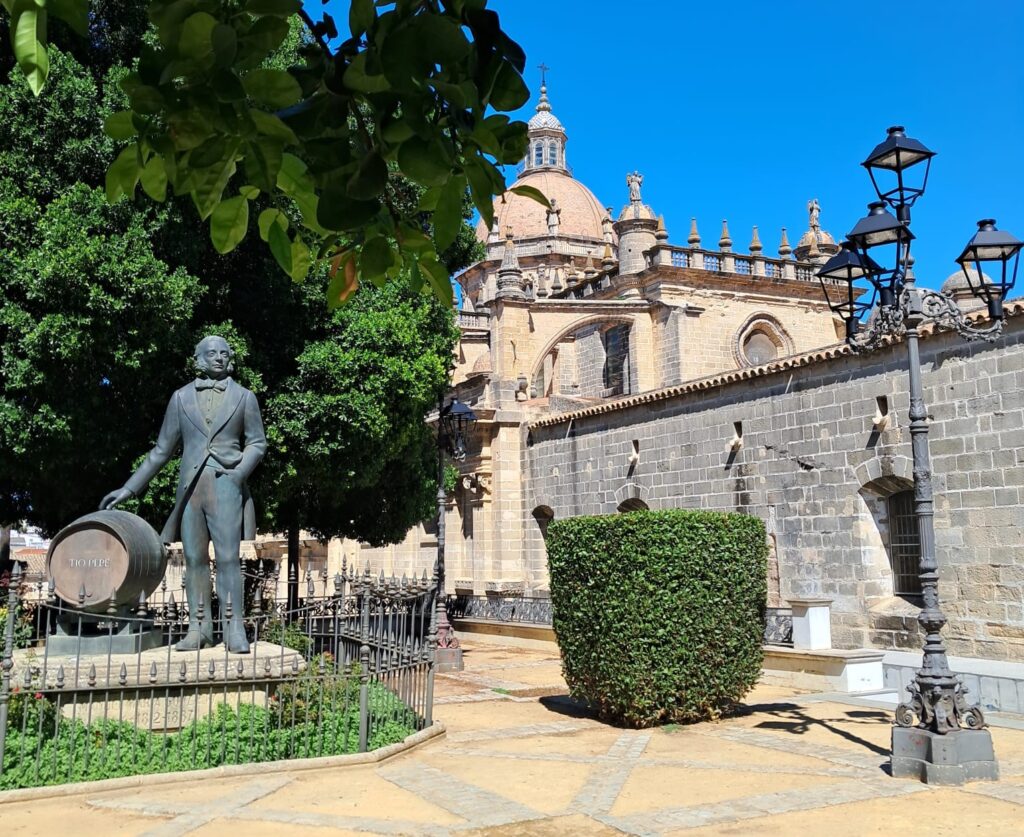
Photo taken by Lynnette of The Joy of Cakes fame – book her for a Seville birthday cake now!
The second major city in the province of Cádiz, Jerez is famous for its sherry (jerez is the Spanish for ‘sherry’), flamenco music and the school of equestrian arts.
What to see in Jerez
➡️ Alcázar – a Moorish fortress from the 11th century
➡️ Try sherry at a sherry bodega. Sherry can only be made in what is known as the ‘sherry triangle’ – which runs between Jerez de la Frontera, Puerto de Santa Maria and San Lucas de Barrameda.
I’m not a huge fan of sherry but the main bodegas to visit include Tio Pepe, Luis Pérez and Sandeman (and yes, you can also find them in Porto with their port) → Check the tasting options here.
➡️ Explore the old town of Jerez, enjoy a meal in a tapas bar as you wander around the narrow streets.
➡️ Visit the Royal Andalusian School of Equestrian Arts, one of the 4 most prestigious riding academies in the world. Here you can watch the riders training every day. Don’t miss the Museum of Equestrian Art while you’re there.

Jerez hotel top pick: Suites Alfonso X
Top Jerez hotel splurge: Hotel Bodega Tío Pepe
Best tour of Jerez: Private tour around the historic centre
➕ Gibraltar – one of my absolute favourite day trips from Seville is a trip to Gibraltar, that small anomaly sitting just at the edge of Cádiz Province.
It’s an absolute must for anyone interested in history and pre-history. Did you know that the Neanderthals survived for thousands of years longer here than anywhere else in Europe.
Cádiz Beaches
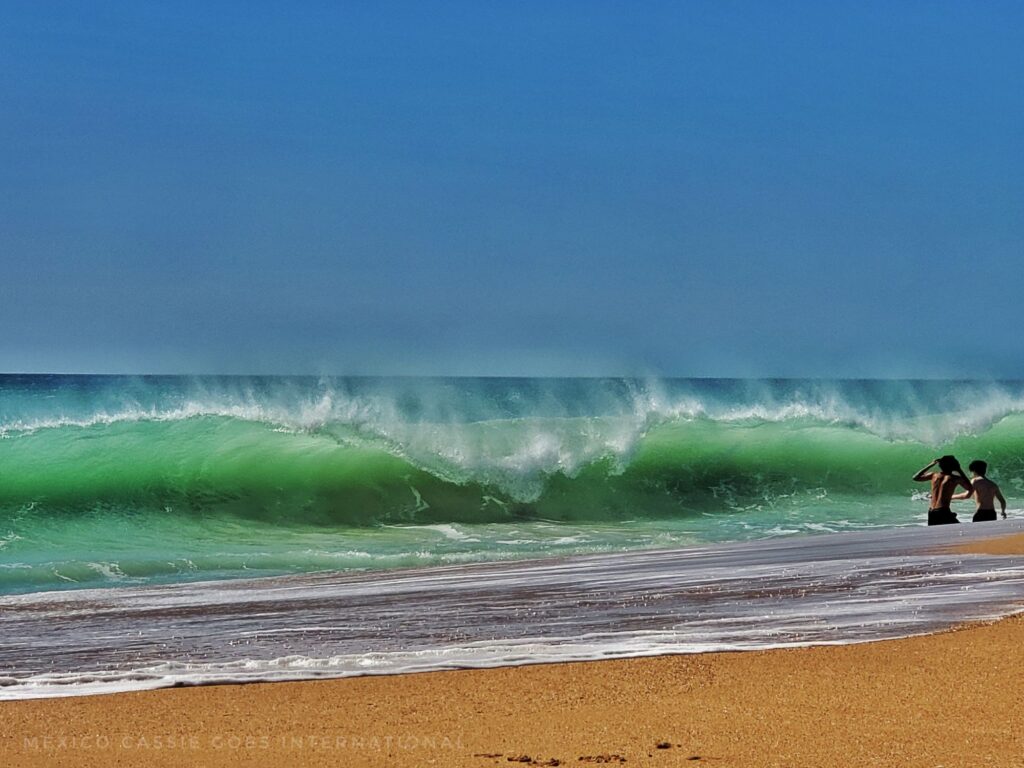
Cádiz’s coastline is part of Spain’s gorgeous Costa de la Luz that runs all the way from Huelva Province’s border with Portugal in the west to Tarifa in the east. These beautiful beaches sit on the Atlantic Ocean. Some are wild and empty and others are flanked by chiringuitos (beach bars) and beach towns.
Some of Andalucía’s most fabulous beaches are found in Cádiz Province and my personal opinion is that these beaches are more beautiful than those along the more famous and more visited by international tourists, Costa del Sol.
➡️ The Cadiz beaches are perfect if you’re looking for an easy beach day from Seville.
Tarifa
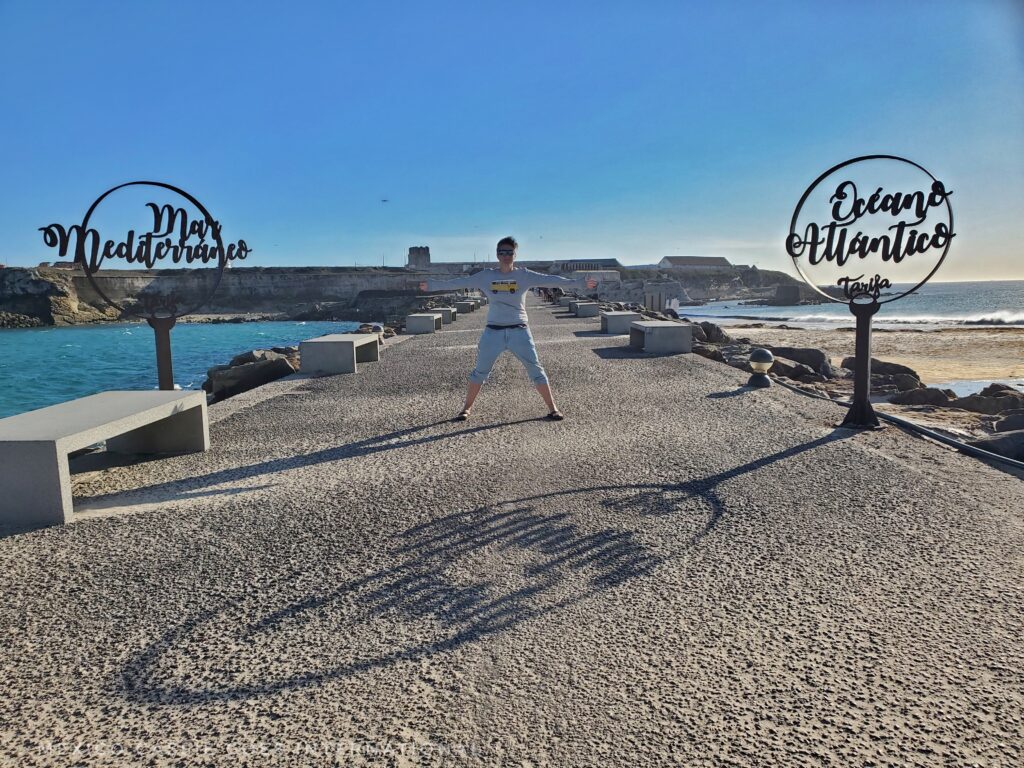
The location of this small town can not be beaten. It stands at the confluence of the Mediterranean Sea and the Atlantic Ocean and is the southernmost point in mainland Europe, just 14km from the north African coast. Imagine standing between two oceans and two continents at the same time – what a rush!
What to do in Tarifa
While the bulk of activities in and around Tarifa are beach based, that isn’t all this gorgeous little town offers its visitors.
➡️ Explore Tarifa’s Old Town – as you wander around the narrow streets of the old town, visit the Castillo de Guzman el Bueno, a tenth century fortress that is one of the best preserved defensive enclosures in all of Spain.
➡️ Visit Baelo Claudia and Playa de Bolonia – just 20 minutes from Tarifa is this double whammy of one of Spain’s best preserved Roman ruins and one of the most gorgeous beaches you can imagine. Do not miss this incredible pairing.
➡️ Take a tour of Isla de Tarifa – only bookable through the tourist information centre. The interpretation centre on the island is incredibly informative and the views of the African coast from here are unbeatable.
➡️ Take a boat trip / dolphin and whale spotting tour – since these incredible animals live in the Strait of Gibraltar all year round you’re practically guaranteed to see some.
➡️ Take a day trip to Morocco – yup, really, Tarifa and Tangier are so close that you can even visit for lunch (if you love tagine enough that can be bothered with passport control of course). Take a ferry and wander on your own or take one of the many excellent official tours on offer from Tarifa.
Playa de Bolonia
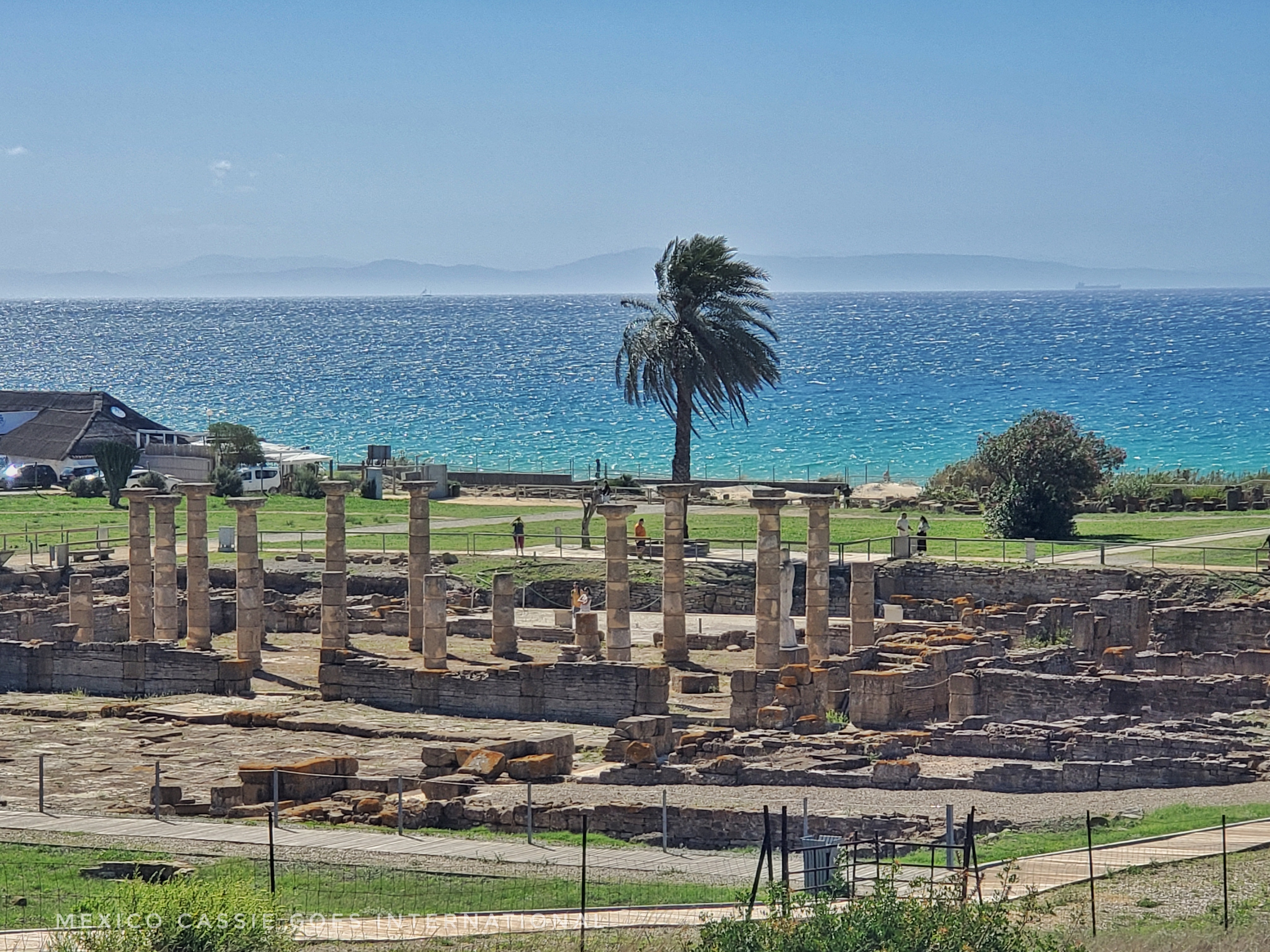
If you love archaeological sites and beaches then Bolonia will knock your socks off.
This beach is home to not to not only the ruined town of Baelo Claudia (one of the best Roman ruins in all of Spain but also one of the biggest sand dunes you’ll see in Spain with the absolute best views across to Africa. The dune is over 30 m high and 200 m wide and you can climb all the way to the top it to gaze out over the Estrecho Nature Park and the incredible views it offers.
There are chiringuitos along the beach and one end (near the dune) is a nudist area of beach.
➡️ Read more about Playa de Bolonia
Los Caños de Meca
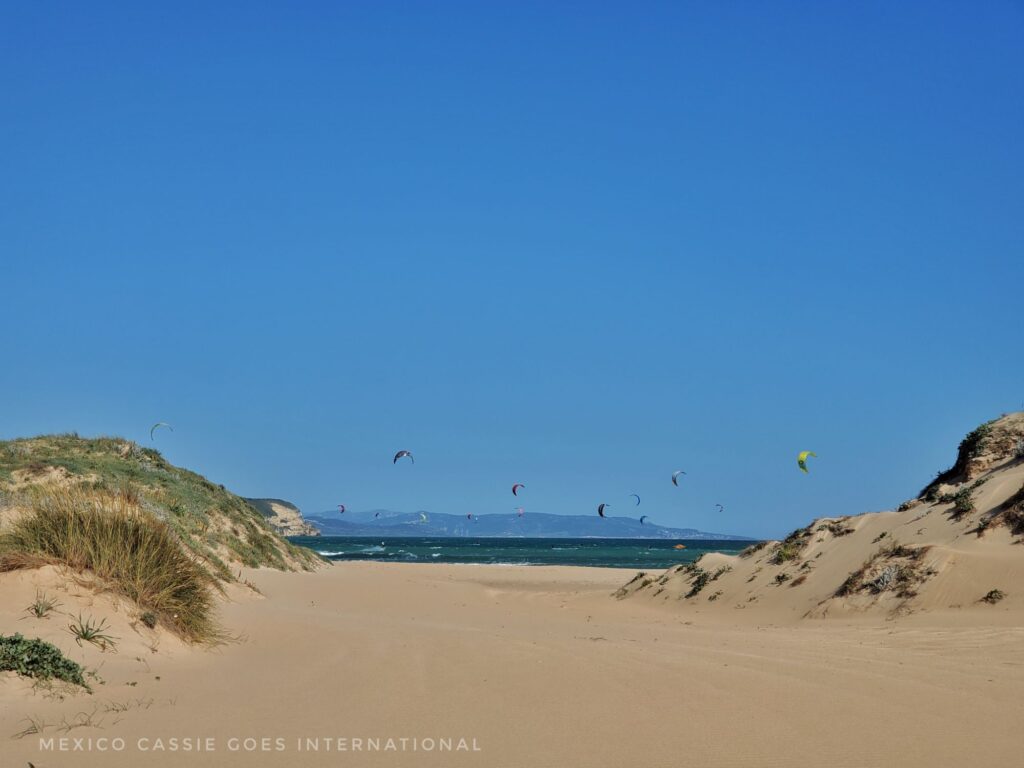
If you’re looking for gorgeous beaches in Cádiz province, you can’t do much better than this area. The main beaches here are Playa Faro de Trafalgar, Playa los Caños de Meca and Playa el Pirata.
Trafalgar, of course, is where the famous Battle of Trafalgar took place. Although there’s not much to see there, the Trafalgar Lighthouse (Faro de Trafalgar) stands proudly on the cliff. You can walk to its base but it’s fenced off and not for climbing.
Playa de Trafalgar is a wonderful stretch of beach favoured by surfers and next door (accessible from the same carpark between the two) is Los Caños de Meca where you’ll find plenty of kite surfers and windsurfers.
Caños de Meca pueblo has decent hotels, campsites and some excellent restaurants including Restaurante el Pirata, which has fabulous views over the beach and incredible fresh fish plates.
Pueblos Blancos in Cádiz
The Province of Cádiz and the Province of Malaga are home to the Pueblos Blancos, or White Towns, that people so love to visit. There are 19 Pueblos Blancos in Cádiz alone but the following are the most beautiful and most visited:
Setenil de las Bodegas

This small mountain town is famous for being home to whitewashed houses and to home built into the cliffs along the Río Trejo. It has become a popular tourist destination despite its inland location.
The town extends along the course of the Rio Trejo with some houses being built into the rock walls of the gorge itself, created by enlarging natural caves or overhangs and adding an external wall. It is thought that the town’s name comes from the Latin phrase “septem nihil”, seven times nothing, which refers to the Moorish town’s resistance and the seven sieges apparently carried out by the Christians to get it back.
What to do in Setenil de las Bodegas
➡️ This is one of those tiny towns where you can pretty much see everything just by wandering around without too much of a plan. People do stay in Setenil de las Bodegas though, for the thrill of staying in a cave home.
Note: there is free parking all along the sides of the road as you drive into Setenil de las Bodegas BUT I don’t recommend relying on this as it goes fast and actually the municipal carpark is better located down at the bottom of the valley.
➡️ Calle Cuevas del Sol and Calle Cuevas de la Sombre – these two streets offer up the most famous and recognisable shots from Setenil de las Bodegas. On either side of the Río Trejo these two streets are lined with restaurants, bars and shops built into the rocky walls. Calle Cuevas de la Sombre (Shadow) runs right through the rock at one point.
It was hard to move through the streets at some moments due to the large numbers of tourists milling around also wanting to get great shots.
➡️ Mirador del Carmen – Setenil city letters are here and there’s a small playground up here too.
➡️ Bésame en este Rincon – (kiss me in this corner). This is a cute bench presumably erected for Instagram. I didn’t kiss anyone here (sob, poor me) but we did go into the tiny cafe just behind and enjoy a drink and a snack on the cliff-house balcony. That felt pretty special.
➡️ Calle Herrería – here we found one enterprising old man who was letting people into his house for one Euro each. There wasn’t much to see that was any different from any other home apart from its tiny size and rocky walls but his lunch smelled good! Of course, we couldn’t turn up the opportunity to see inside a teeny rock-cave house.
Zahara de la Sierra
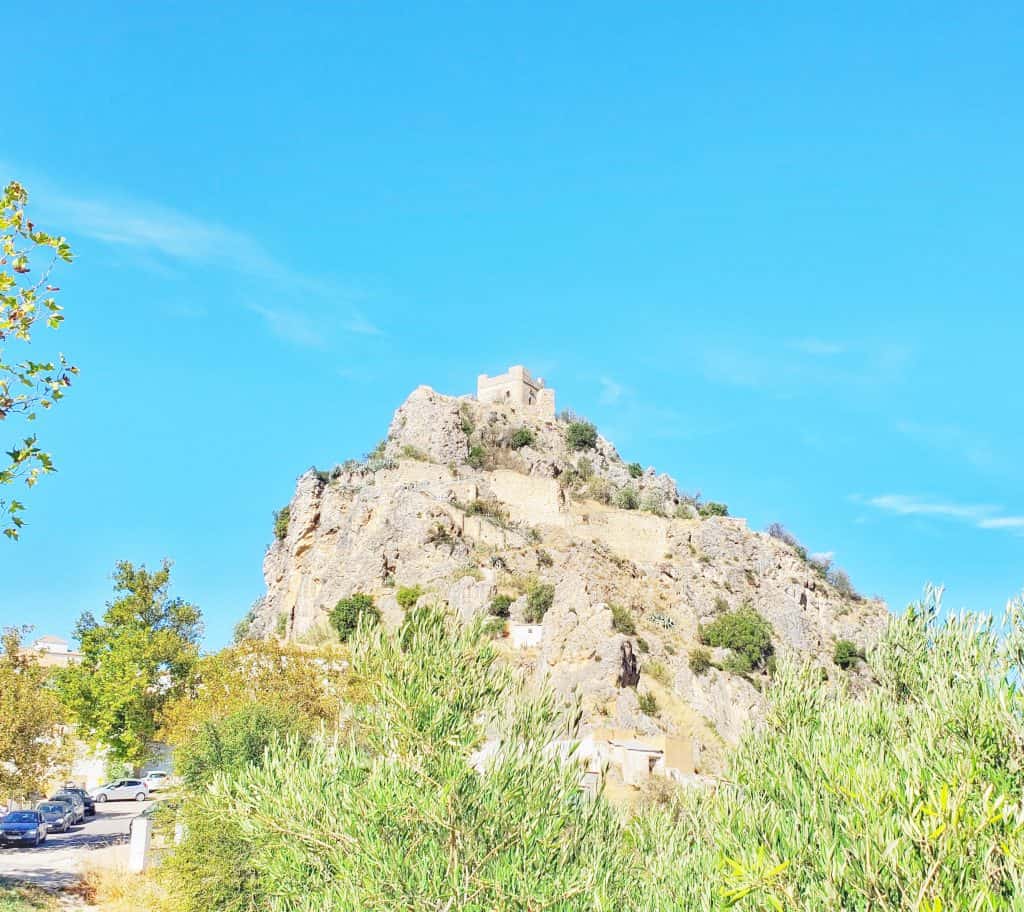
Zahara de la Sierra is a small mountain town located between Seville and Ronda. Originally a Moorish outpost, today it is known for being one of the most beautiful of the pueblos blancos. On the top of the craggy outcrop, there is a fascinating castle that was built as a fortress in case of attack. The town played an important part in the history of the region since its recapture by the Emirate of Granada in 1481 (after losing it in 1407) was the catalyst for Castile’s war against Granada. Zahara de la Sierra was captured by Castilian troops in 1483.
Today it’s a cute small town on the “Pueblos Blancos” route (White Towns route). A stroll through the streets is an utter delight but obviously, since it’s on a small mountain, there are a lot of steps and steep paths to take in.
What to do in Zahara de la Sierra
This small town doesn’t need more than a day but again, it’s perfectly delightful to stay for longer should you wish to do so. I checked it out with a friend after completing a pretty arduous hike in the nearby Garganta Verde. We decided that after exhausting ourselves with steep climbs there, the only wise thing was to head into Zahara de la Sierra to climb up to the castle.
➡️ Castle and Medieval town ruins – Tickets for the medieval town and castle are bought together from the kiosk at the entry to the site. Remember that the castle is perched atop a small mountainy-hill so it’s a good 10-15 minutes walk UP to reach the castle. The walk around the castle is gorgeous and the castle itself is pretty interesting.
➡️ Walks in Sierra de Grazalema Natural Park – an area of utter natural beauty. The mountains can be seen from Zahara de la Sierra and quite frankly, if you’re like me, they’ll call to you.
If you can’t get this far out of Seville then perhaps somewhere closer like Alcalá de Guadaíra with its gorgeous parks would work for you.
➡️ Garganta Verde – this is a huge nearby canyon offering a fairly arduous yet gorgeous trek (permissions required before walking here). Be sure to look up regularly and admire the griffon vulture colony that lives here. Nearby (ish) Monfragüe National Park is home to some of the best vulture and eagle colonies in Spain.
➡️ Pinsapar Route – a gorgeous walk through a pine forest
➡️ Wander around the town – check out the Santa María de la Mesa Church, San Juan de Letrán Chapel, Torre del Reloj, Palominos Bridge.
➡️ Visit the miradors (viewpoints) – looking over the Zahara-El Gastor Reservoir.
➡️ Artificial beach and water sports – During the summer, the Arroyomolinos Recreation Area offers a ‘beach experience’ where people swim and enjoy the other water sports on offer.
Arcos de la Frontera
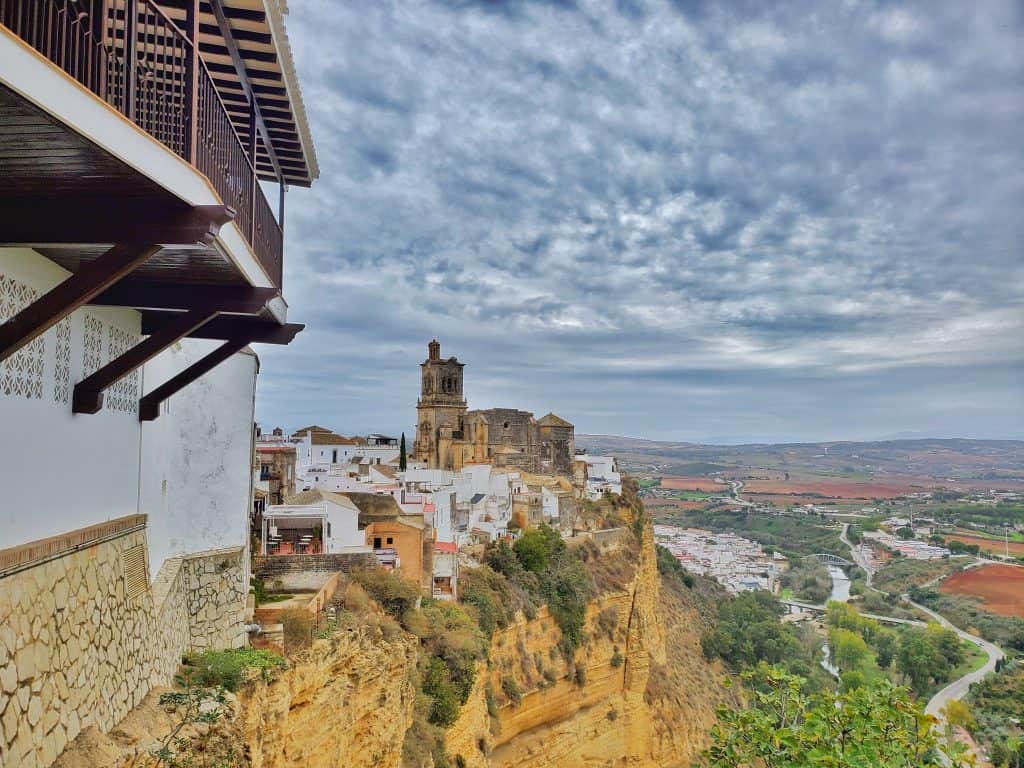
Arcos de la Frontera, one of the Pueblos Blancos, is considered one of Spain’s most beautiful towns so I simply had to check it out. It’s an easy day trip from Sevilla, Cádiz or Ronda. This small town sits on top of a peña (monolith – if you’ve followed my blog for a while you’ll know that visiting La Peña de Bernal in Mexico was one of the highlights of my existence so when I realised Arcos de la Frontera was also built on a peña I was pretty excited).
The town’s name refers to the fact that it was a frontier town during the Moorish period of Spanish history. It is famous for its ten church bells, which tolled then and remain in situ now. We didn’t know about the bells when we visited but we absolutely noticed them as we wandered around.
What to do in Arcos de la Frontera
Note: I highly recommend parking in the municipal carpark at Plaza Andaluciá and walking the fifteen minutes into the old centre of town. The roads get horribly narrow and there aren’t many parking options. The plaza is technically available for parking but even when we went on a cold Tuesday morning in November it was full.
➡️ Churches – there are many churches to check out should you wish to do so. We didn’t. We exclaimed from outside but didn’t go in. Perhaps we should have but time was limited and neither of us is particularly excited by them.
➡️ Castle – you can see the castle in town but you can’t visit it as it’s privately owned. Why don’t I get to live in a castle?
➡️ Parador de Arcos de la Frontera – this hotel offers incredible views of the surrounding area. We had a drink on the terrace, marvelling at the silence and watching the birds murmurate for us.
➡️ Birth place of the poet Julio Mariscal – on whose facade can be seen a commemorative tile. I hadn’t heard of this guy but his poetry and sayings can be found around town. We enjoyed stopping to read them.
➡️ Jardín Andalusí – a peaceful garden designed to represent the mix of Spanish and Moorish influence on the area. It was closed when we were there but looked very pretty.
➡️ Miradors – the two primary ones are Plaza de Cabildo (next to the Parador, see above), and Mirador de Abades. Plaza de Cabildo stands next to the castle and is home to the Basilica Menor de Santa Maria de la Asuncíon, an enormous church with an imposing bell tower.
➡️ Convento de las Mercedarias Descalzas – established in 1642, this is the only remaining cloistered convent in Arcos de la Frontera. The nuns here make candies that you can buy directly from them or in some of the shops around town. We were just reading the poster on the door and figuring out what we might want when the convent door slammed shut in our faces. A little reminder that we really don’t need candy perhaps!
➡️ Look UP, see the guardacantones – kinds of buttresses or reinforcements of the corners of old buildings – very cool to see. The most famous and astounding is Callejón de las Monjas where the buttresses were built in 1699 to prevent the walls of the church from buckling under the weight of its vaults. I read that cars can fit through this teeny tiny space and that locals love to watch visitors nervously drive through. We didn’t try it.
➡️ Ventanas con orejeras – (windows with earmuffs) – tiny holes in the walls of houses so people could see what was going on outside without being seen. We didn’t find any, which made me sad as I really want to know what they look like and how they differ from, um, windows.
➡️ The Tourist Office is also home to an interpretation centre for the city.
➡️ Monumento a la Semana Santa – erected in 2008 this is a monument to Easter week
➡️ El Circulo Magico – a magic circle on the floor. We didn’t find it.
Olvera
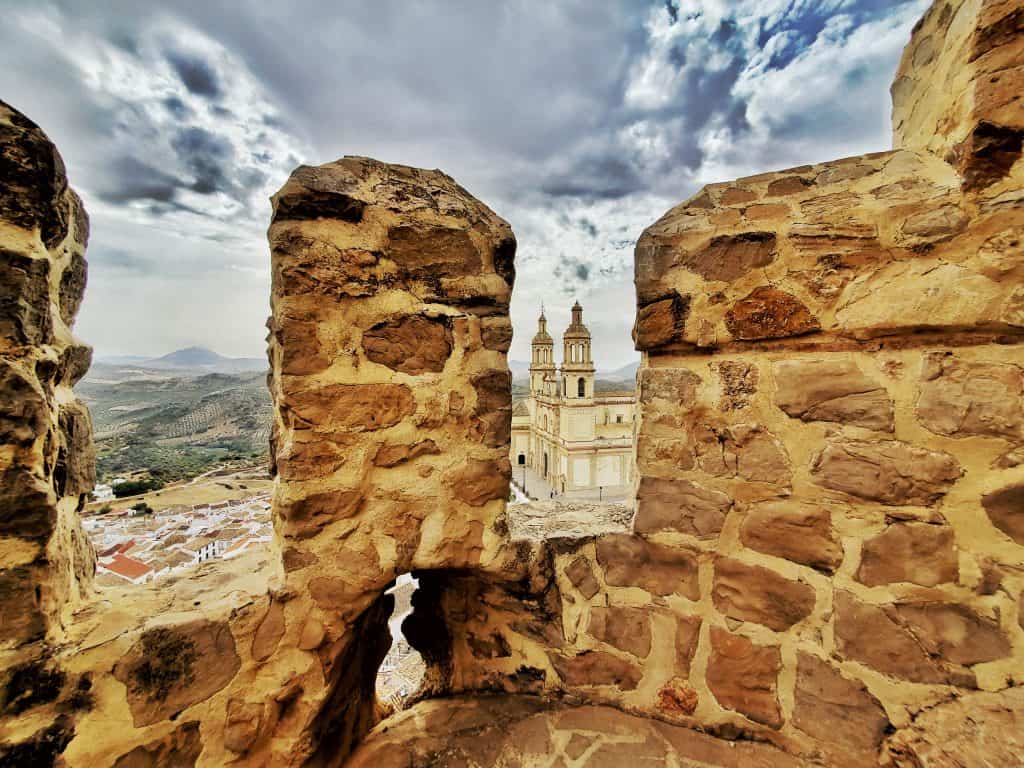
It is thought that Olvera has been inhabited since the Celts lived in this region of Spain. Certainly, the town existed when Romans and Visigoths were present (for more Roman and Visigoth history in the area check out Mérida). The town’s castle even appears to have some Roman foundations. In the 12th century, Olvera is mentioned in Muslim records as an outpost taken by King Alfonso XI from the Muslims. The town was named Olivera in 1327 as a nod to the sea of olive trees surrounding the town (they’re still there, by the way. (The ‘i’ was lost and the town became Olvera)
Olvera was an accidental stop for us. We were driving home from Ronda and suddenly there was this amazing castle on the horizon. We’d just promised the kids we were going home and that they could relax when we got back so they weren’t super excited when we changed our plans and detoured over to answer the clarion call of this sexy, sexy castle.
What to do in Olvera
The pueblo blanco of Olvera is tiny but it was declared a “protected area of artistic and historical importance” in 1983 and although there isn’t officially much to do there it has an undeniable charm and pull to it.
➡️ Parroquia de Nuestra Señora de la Encarnación – this enormous church (the Parish of Our Lady of the Incarnation), stands next to the beautiful 12th-century Muslim castle atop a mountain with the small town spread out below.
➡️ Castle – To visit the castle you need to climb up the steps to the right of the church and head into the tourist information/museum directly in front of you. Once you’ve marvelled over the spectacular views and checked out the small but interesting museum you’ll be led across the square and sent through a nondescript door that leads to the base of the castle.
The panoramic views from the castle will stay with you for a very long time, so dramatic and beautiful is the scenery. Without a doubt, this castle is one of my favourite castles in Cádiz Province, maybe even Andalucía or Spain.
Another city in southern Spain with an incredible castle-church-combo is Aracena in Huelva Province. Aracena has so much to see and do and it is perfectly possible to visit on the same trip as visiting Cádiz Province.
➡️ Olvera Letters – between the castle and the church are the Olvera letters should you wish a photo with them.
➡️ Cemetery – Look down from the castle and you’ll see a small cemetery that you can, if you have time, explore.
➡️ Plaza de Andalucía – the main square looks like a lovely place to spend a few lazy hours. When we were there, over siesta on a Sunday, nothing was open so we carried on home.
➡️ Peñon del Sagrado Corazon – I am sad to have missed this extra climb but I suspect my kids are very grateful we didn’t head up this rock for extra views of the castle, church and town.
Vejer de la Frontera
Another gorgeous pueblo blanco sitting atop a hill overlooking the Strait of Gibraltar and the mountains.
What to see in Vejer de la Frontera
I haven’t yet visited but I’ve done my research ready for an upcoming trip.
➡️ Old City defensive walls
➡️ Castle (9th century) perched overlooking the town
➡️ Plaza de España and its gorgeous tiled fountain
➡️ Museo de las Tradiciones y Costumbres de Vejer
➡️ Mirador la Cobijada – la Cobijada is a statue of a woman in typical dress
➡️ Visit the patios in the Jewish Quarter
National parks & nature in Cádiz
There are 6 national parks in Cádiz, the 3 primary ones are:
Doñana National Park
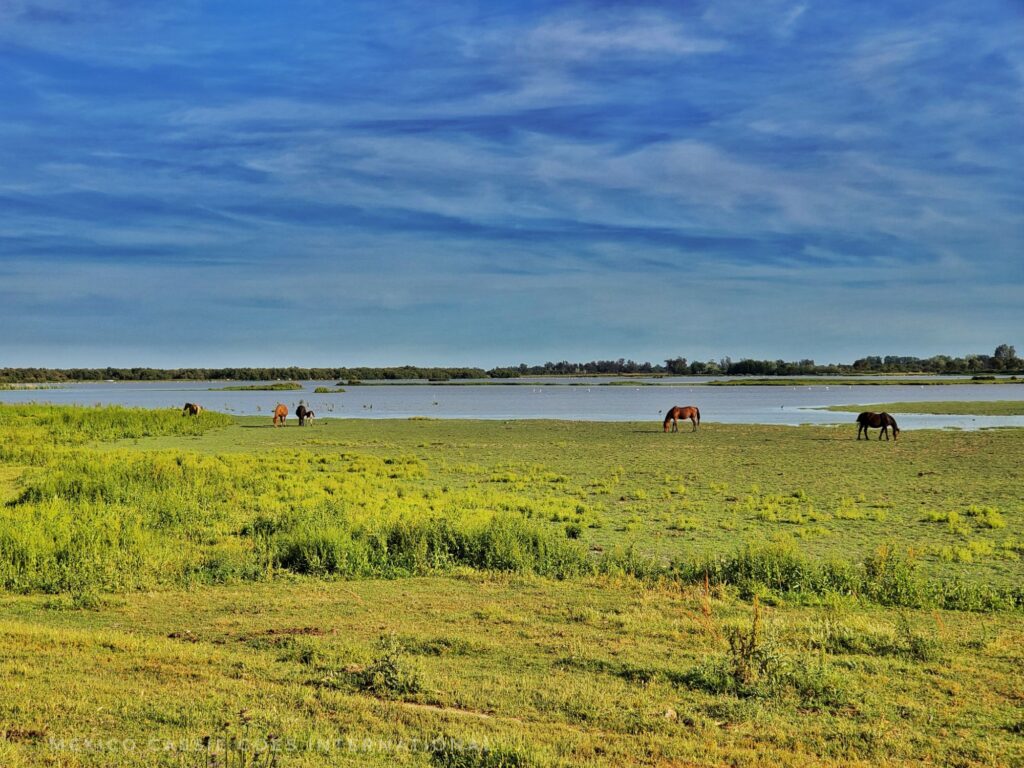
➡️ While it’s not possible to stroll into the Doñana National Park (which straddles the provinces of Huelva and Cádiz), it is possible, from Sanlúcar de Barrameda, to cross the River Guadalquivir and enter the “Etorno de Doñana” – the nature park that protects the National Park.
It is also possible to take a tour into the national park from here although most tours you find online leave from Seville and head into the park via Huelva Province.
Parque Natural los Alconocales

Known as “the jungle of the Iberian Peninsula”, this natural park reaches to the Cádiz coast and even offers views over to Africa. It’s possible to go walking, kayaking, see archaeological remains, and even take balloon rides.
This park straddles Cádiz and Malaga Provinces. Its name means “Cork Oak Groves” and the majority of trees here are, indeed, cork oak. In fact, it’s the most extensive cork forest in all of Spain.
Estrecho Nature Park
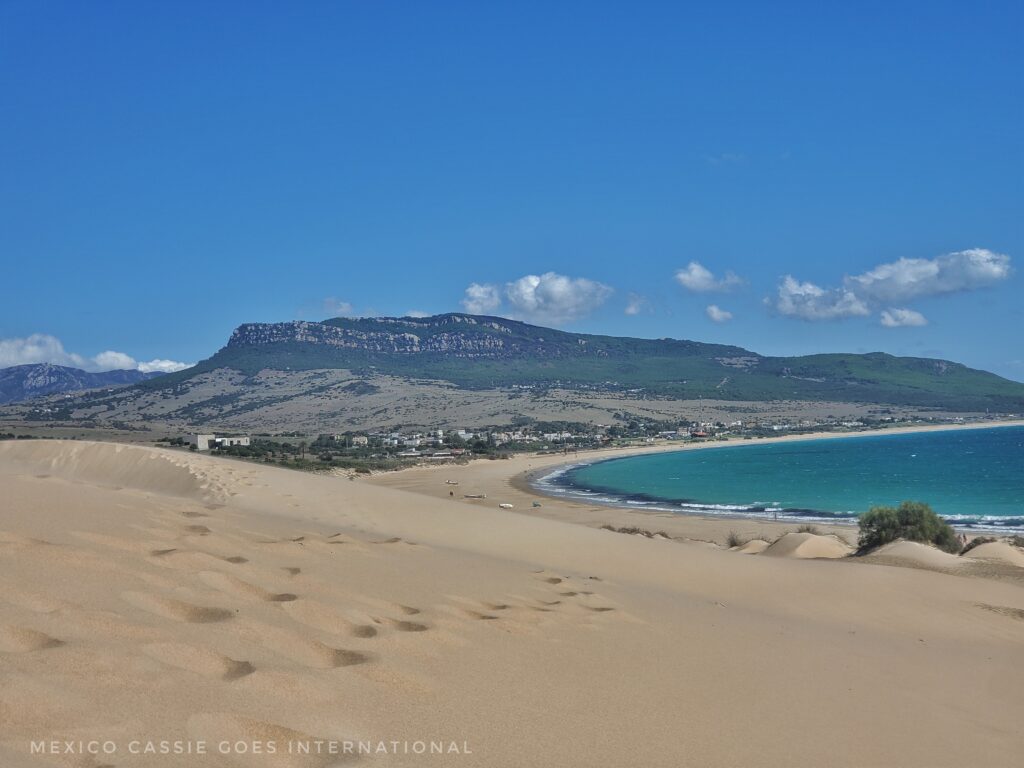
Parque Natural del Estrecho runs between the two coastal towns of Tarifa and Algeciras (the northern side of the Strait of Gibraltar). It comprises mountains, coasts and ocean. It is the southernmost park in mainland Europe and includes the point where the Atlantic Ocean and Mediterranean Sea meet.
Where next in Andalucía?
➡️ Huelva Province – for Aracena, Almonaster la Real, Huelva, Niebla, Punta Umbria and more
➡️ Malaga Province – for Antequera, Malaga, Ronda, Mijas Pueblo, beaches and more
➡️ Córdoba Province – for Córdoba, Zuheros and more
➡️ Seville Province – for Seville, Alcalá de Guadaíra and more

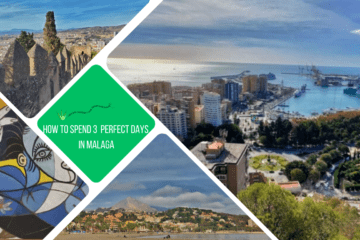
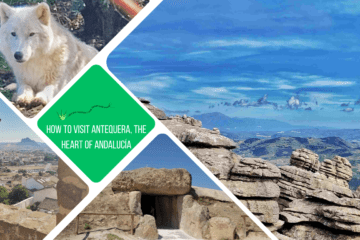
2 Comments
FredinMotul · 30/11/2022 at 8:07 pm
Wow! The skies and all those exciting places to visit. Thanks for sharing this. More to dream about. Hey, do I know the lady with the Blue Hair BTW??
Cassie · 01/12/2022 at 3:44 am
Hahahahaha yes indeed.